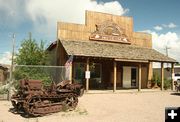
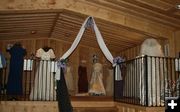
Wedding Dress Exhibit
|

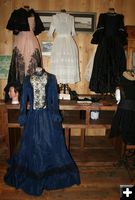
Dresses
|

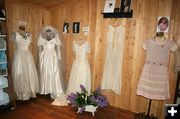
Wedding Dresses
|

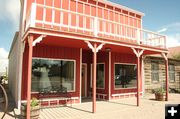
Burnham Building
The Burnham building is set up like a general store. The Wedding Dress exhibit is in this building.
|

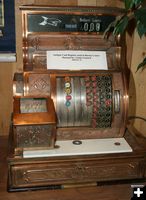
Cash Register
Antique cash register used in Burney's store in Big Piney. Donated by Linda Leonard.
|

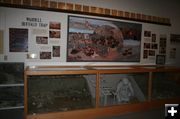
Wardell Buffalo Trap
The Museum has a large display devoted to the archaeology of the Wardell Buffalo Trap, located several miles east of Big Piney. This legendary site is It is the earliest known evidence of a communal bison kill involving use of bow and arrow in the northwest plains. More
|

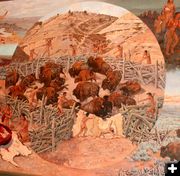
Wardell Mural detail
Detail of one section of the large Wardell Buffalo Trap wall mural inside the Museum.
|

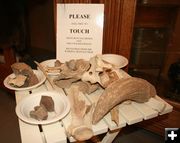
Please Touch
Not everything is behind glass cases at the Museum. They have a table with things kids CAN touch.
|

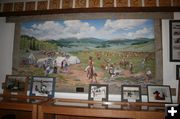
Ranching Mural
This large wall mural is entitled "Cowboys on the Green." It was painted by Ann Anspach, Holly Jensen, Kay Meeks, Ruth Rawhouser and Lynn Thomas and donated to the Museum in 1991 to go with the brand project and ranching exhibits.
|


Del Dearth Shotgun
The top shotgun belonged to Delbert Dearth who came to Big Piney in the early 1920s as a government trapper to trap gray wolves and coyotes that were killing cattle in the area. Ironically, now the government is spending tax dollars to bring predators back to ranchlands.
|

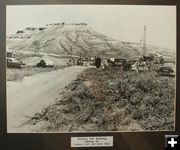
No 2 Govt Tip Top Well
The #2 Gov't. Tip Top Well belonged to the Western Oil Refining Company. This well blew in while coring at 980 feet, making 60 million cu. ft. of gas a day on September 9, 1952. This is one photo that is a part of the Sublette County oil and gas history display at the Museum. Some of the mountain men here in the 1830s wrote comments in their diaries about oil seeps coming to the surface of the ground in the LaBarge area, south of Big Piney.
|

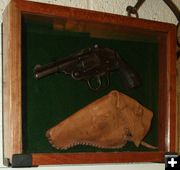
Ivor Johnson 38 Special
This Ivor Johnson .38 Special belonged to Guy M. Carr, Big Piney Town Marshall in the 1940s and 1950s. Donated by Jean Carr.
|

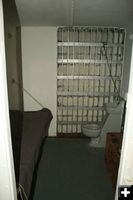
Old Jail Cell
The building that originally held this jail cell was built in the 1920s and burned in the late 1940s. Having nowhere else to put their prisoners, law enforcement officers continued to house prisoners here without benefit of a roof or other comfortable amenities you see pictured here. This cell is on display in the main building of the Museum.
|

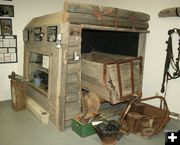
Coal Mine
The Museum has a display and many photos dedicated to the historic coal mining in the Upper Green River Valley.
|


Coal
|


Coal Map
|

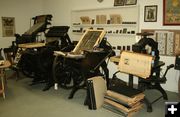
Big Piney Examiner
The Big Piney Examiner published weekly between 1911 to 1968. Presses from the newspaper now are on exhibit in the Green River Valley Museum.
|

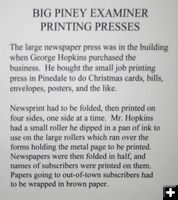
Big Piney newspaper
|

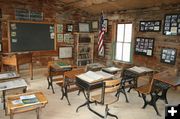
Schoolhouse
The Price-Sommers School was used in the 1920s. It was located on the north end of the Price ranch, next to the Sommers ranch, along the Green River drainage between Daniel and Pinedale.
|

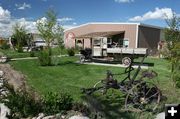
GRVM Addition
This building has more displays. It is located behind the main building.
|

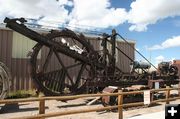
1908 Buckeye Ditcher
Used on the Rainbow Lease.
|

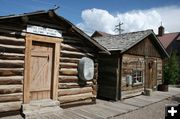
Halfway Post Office
To the left is the Halfway Post Office building. On the right is the back side of the Black Homestead Cabin. This post office was operated out of various locations over the years to service rural residents in the Cottonwood Creek/Ryegrass drainage area between Daniel and Big Piney.
|

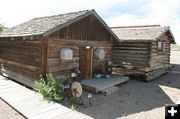
Black Homestead Cabin
This 1900 era cabin was originally located on the Sikes place. It was dismantled, the logs numbered, and reassembled log by log.
|

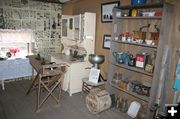
Cabin Interior
Interior view of the Black Homestead Cabin.
|

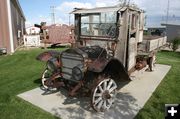
Old Mail Truck
|


Tie Hack Display
Tie hackers operated in the Wyoming Range of the Bridger-Teton National Forest fro 1900 to the 1930s. The cut down trees and made them into railroad ties for tracks for the Union Pacific Railroad. Logging was done in the winter and the ties were piled up along streams. The tie hack loggers used the force of spring thaw water surges along Cottonwood Creek and its tributaries to take the ties down to the Green River, where they were floated down to Green River City.
|

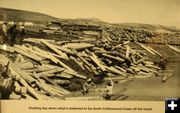
Floating ties
Tie hackers floating ties down what is believed to be South Cottonwood Creek.
|

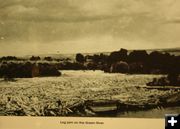
Tie log jam
Tie log jam on the Green River.
|

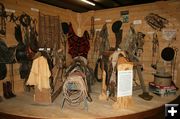
Saddles and Tack
Display of old saddles and equipment used in the early ranching days of the area.
|

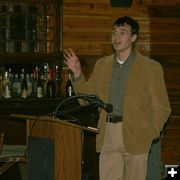
William Bauer
A week earlier, the Green River Valley Museum held a Wyoming Humanities program: "Buying, Selling and Trading in Indian Country: American Indians, Overland Migrants, and Economic Borders of the Overland Trail," given by guest speaker William Bauer.
|
